Module 5 – Water

LLM Online
©Arlene R. Taylor, PhD
Module #5 — Water
Water is your body's most important nutrient, involved in every bodily function. Water helps you to maintain body temperature, metabolize body fat, aids in digestion, lubricates and cushions organs, transports nutrients, and flushes toxins from your body.
—Marjie Gilliam
To Begin
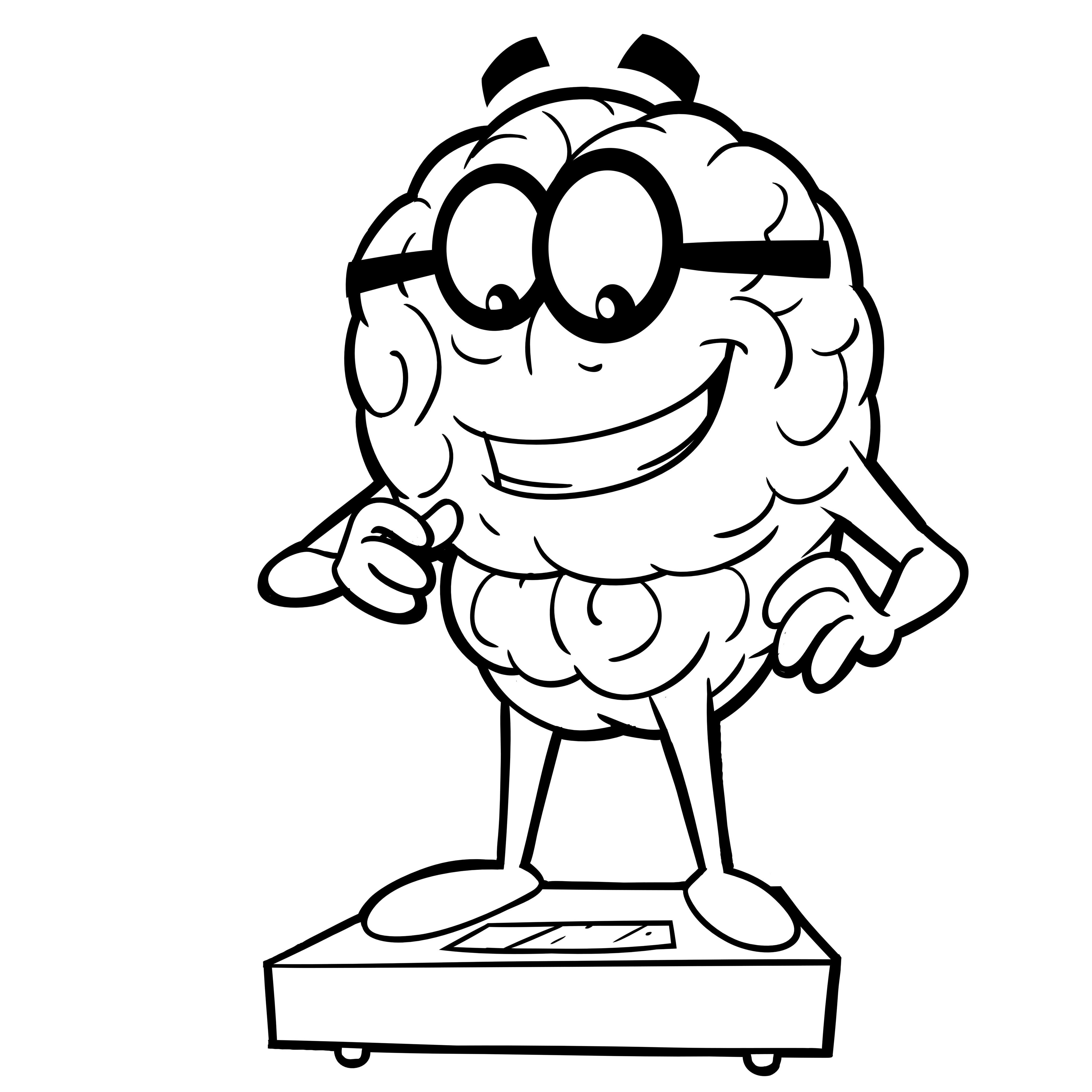 Weigh yourself in your underwear or clothes that you will wear each week on the same scales—no belt, shoes, sweater, or jacket.
Weigh yourself in your underwear or clothes that you will wear each week on the same scales—no belt, shoes, sweater, or jacket.- Measure your waist around the level of your belly button.
- Calculate your Body Mass Index using the BMI chart. Use your height in centimeters.
- Record data on the Weekly Comparison form (please print form).
- Write in your own goal on the Daily Goals form (please print form).
- Post the Daily Goals form where you can see it easily. Record your data each day.
Despite his artistic pretensions, his sophistication, and his many accomplishments man owes his existence to a six inch layer of topsoil and the fact that it rains .
—Paul Harvey (Box)
Overview
- Water is an essential nutrient, meaning the brain and body cannot create it.
 Oxygen also is an essential nutrient. Some argue that oxygen is the most essential nutrient because, without it, brain cells begin to weaken in a mere three or four minutes. Nevertheless, according to Friedrich Manz, MD, water is quantitatively the most important nutrient. Every organ in the body requires water to do its job. It is critical for protecting the spinal cord and other sensitive tissues; removing waste by urination, sweating, and bowel movements; regulating temperature; lubricating and cushioning joints; keeping blood and lymph flowing smoothy; and helping the skin stay plump and hydrated. Even Immune System function can be impaired from dehydration which negatively impacts lymph fluid.
Oxygen also is an essential nutrient. Some argue that oxygen is the most essential nutrient because, without it, brain cells begin to weaken in a mere three or four minutes. Nevertheless, according to Friedrich Manz, MD, water is quantitatively the most important nutrient. Every organ in the body requires water to do its job. It is critical for protecting the spinal cord and other sensitive tissues; removing waste by urination, sweating, and bowel movements; regulating temperature; lubricating and cushioning joints; keeping blood and lymph flowing smoothy; and helping the skin stay plump and hydrated. Even Immune System function can be impaired from dehydration which negatively impacts lymph fluid.
- More than 70 percent of Planet Earth is covered by water and the human body is sometimes compared to that metaphorically. At birth, a newborn is approximately 75-78 percent water by weight, which soon begins to fall. In adulthood,
 the amount of water in the human body ranges from 45-75 percent—slightly lower in females because of less muscle and more fat tissue, which is quite dense at 10-16 percent water.
the amount of water in the human body ranges from 45-75 percent—slightly lower in females because of less muscle and more fat tissue, which is quite dense at 10-16 percent water.
Estimates are that the brain is about 70-75 percent water with many of its cells at 85 percent water. Blood and kidneys are about 83 percent water. Heart, 79 percent; muscles, 76 percent. Even bones are about one-fifth water.There is plenty of water in the universe without life, but nowhere is there life without water.
—Sylvia A. Earle
Dehydration can be defined simply as a state of decreased total body water. It represents an alteration toward more solid matter. The price of dehydration is high, impacting all brain-body systems but is especially lethal to brain function, slowing it down and interfering with vital thinking processes. Since water is one of the most vital sources of energy, dehydration causes the body to slow down, resulting in tiredness and fatigue. Studies have linked dehydration with impaired performance, depressed mood, memory problems, and structural brain changes visible on an fMRI. These changes include reduced volumes of cerebrospinal fluid and blood circulation, believed to contribute to the development of vascular dementia and Alzheimer’s disease. Dehydration can be a life-threatening condition—especially for the very young, the elderly, and in conditions that include almost continuous vomiting. Typically, it requires prompt medical attention, sometimes including hospitalization. Untreated in a timely manner it can lead to death.
| Pure water is the world’s first and foremost medicine. —Slovakian Proverb |
- There are three main types of dehydration:
- Hypotonic: primarily a loss of electrolytes
- Hypertonic: primarily a loss of water
- Isotonic: equal loss of water and electrolytes and the type most seen in humans.
| If there is magic on this planet, it is contained in water. —Loren Eiseley |
Electrolytes are substances that produce an electrically conducting solution when dissolved in a polar solvent, such as water. They are extremely important in the human brain-body, helping to maintain hydration levels, as the movement of sodium and potassium in and out of cells determines how much water our body retains or flushes out. Nerve cells must have these slightly charged particles to help transmit electrical impulses along neuronal pathways.
Water is the body’s main source of energy. Water flows through cell membranes providing electrical energy much like turbines in a hydroelectric plant. Sufficient water is important for ongoing energy, especially during the aging process. A lack of water is one of the most common causes of daytime fatigue.
—Fereydoon Batmanghelidjh, MD
 Reminder: Drink a glass of water to hydrate our brain. View the Educational Video. Stand and walk in place for at least a portion of the video to increase blood flow to your brain.
Reminder: Drink a glass of water to hydrate our brain. View the Educational Video. Stand and walk in place for at least a portion of the video to increase blood flow to your brain.
Science in a Nutshell
 According to Corinne Allen, PhD, founder of the Advanced Learning and Development Institute, water provides the energy needed by the brain more effectively than any other substance. The movement of water in and out of brain cells functions much like a hydroelectric plant, generating energy and electricity sufficient to power about a 20-watt light bulb.
According to Corinne Allen, PhD, founder of the Advanced Learning and Development Institute, water provides the energy needed by the brain more effectively than any other substance. The movement of water in and out of brain cells functions much like a hydroelectric plant, generating energy and electricity sufficient to power about a 20-watt light bulb.  More than half of the energy produced is used to transmit messages across neuron pathways in the brain. The remainder are for other chemical and cellular processes in the brain. When water levels fall, energy production also falls.
More than half of the energy produced is used to transmit messages across neuron pathways in the brain. The remainder are for other chemical and cellular processes in the brain. When water levels fall, energy production also falls.- You may recall hearing on the news that Catherine Middleton (she married Prince William of Great Britain), had to be hospitalized during her pregnancies due to a severe type of dehydration known as hyperemesis gravidarum. This is beyond “morning sickness,” so-called.
 Nausea and vomiting may continue throughout the entire day and not just in the morning. These women often lose weight and must receive intravenous replacement of fluids. Without medical intervention the dehydration could be life-threatening to the fetus and/or the mother.
Nausea and vomiting may continue throughout the entire day and not just in the morning. These women often lose weight and must receive intravenous replacement of fluids. Without medical intervention the dehydration could be life-threatening to the fetus and/or the mother. -
Optimum amounts of water and brain function are closely linked. Lack of water to the brain can cause numerous symptoms including problems with focus, memory, brain fatigue, and brain fog, as well as headaches, sleep issues, anger, depression, visuomotor impairments—especially related to activity- and/or exercise-heat stress that is exacerbated by dehydration. Brain cells need at least twice the energy required by most other cells in the body and three times that required by muscle tissue.Water deprivation kills faster than lack of any other nutrient.
—Linda Boeckner & Kay McKinzie
Drinking water is like washing out your insides. The water will cleanse the system, fill you up, decrease your caloric load and improve the function of all your tissues.
—Kevin R. Stone
Matter of Fact
1st –
Body water refers to the water content of a human body that is contained in the tissues, blood, muscles, body organs, bones, and so on. The percentages of body water contained in various organs and blood and lymph vessels or other compartments add up to what is called Total Body Water (TBW). This water makes up a significant fraction of the human body, both by weight and by volume. Ensuring the right amount of body water is an aspect of homeostasis or balance. If this balance is disturbed it can have a negative impact on the brain and body.
Estimates are that you can live at least ten times longer without food than without water. Unfortunately, studies have shown that some children and adults drink very little water, opting mostly for sodas (regular or diet), fruit juices, sugary drinks, tea, coffee, or colas. While these are liquids, they are not plain water, which is best for the brain. Corinne Allen, PhD, founder of the Advanced Learning and Development Institute, has found that people with brain challenges such as autism spectrum disorders, Attention-Deficit/Hyperactivity Disorder, head injuries, anxiety attacks, and depression often drink almost no water each day. This lack of water exacerbates the brain dysfunction.
studies have shown that some children and adults drink very little water, opting mostly for sodas (regular or diet), fruit juices, sugary drinks, tea, coffee, or colas. While these are liquids, they are not plain water, which is best for the brain. Corinne Allen, PhD, founder of the Advanced Learning and Development Institute, has found that people with brain challenges such as autism spectrum disorders, Attention-Deficit/Hyperactivity Disorder, head injuries, anxiety attacks, and depression often drink almost no water each day. This lack of water exacerbates the brain dysfunction.
We forget that the water cycle and the life cycle are one.
—Jacques Yves Cousteau
2nd –
America has a “drinking problem” that has nothing to do with alcohol and everything to do with the lack of good hydration. Estimates are that most people over the age of 50 drink less than 1 quart (32 oz.) or 1 liter (1,000 ml) of water per day. Yet according to the Mayo Clinic, 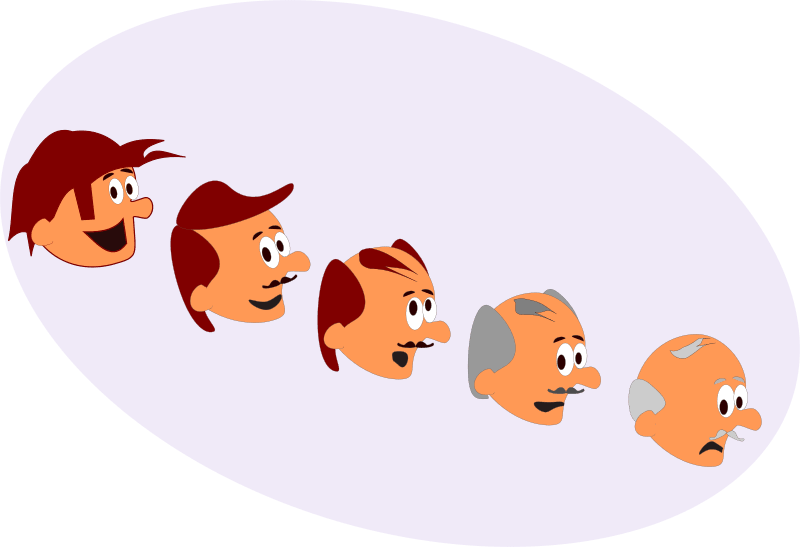 the average adult loses more than 80 ounces (2365 ml) of water daily through sweating, breathing, and waste elimination. The individual is 48 ounces (1420 ml) in deficit compared to the amount of water taken in. This leaves the average person continually at risk for some level of dehydration.
the average adult loses more than 80 ounces (2365 ml) of water daily through sweating, breathing, and waste elimination. The individual is 48 ounces (1420 ml) in deficit compared to the amount of water taken in. This leaves the average person continually at risk for some level of dehydration.
Another “drinking problem” has to do with substituting colas and sugary drinks for water. Depending on the amount of soda guzzled, a person might add as much as a pound (0.45 kg) per week to their weight. One 20-ounce glass of cola can contain the equivalent of 16 teaspoons of sugar, which is nearly 3 times the maximum daily sugar intake recommended by the American Heart Association. Sugar is a toxin to the brain. But that may be just the tip of the iceberg. Soft drinks containing caffeine and sugar mimic the effect of amphetamines, providing a temporary energy boost. The ‘high’ shoots up blood sugar levels but is followed by a rebound ‘low’ as blood sugar levels fall. Such dramatic fluctuations in blood-sugar levels can damage both the brain and immune system organs, contribute to health problems in the long term, and even accelerate the development of symptoms of aging.
sugar intake recommended by the American Heart Association. Sugar is a toxin to the brain. But that may be just the tip of the iceberg. Soft drinks containing caffeine and sugar mimic the effect of amphetamines, providing a temporary energy boost. The ‘high’ shoots up blood sugar levels but is followed by a rebound ‘low’ as blood sugar levels fall. Such dramatic fluctuations in blood-sugar levels can damage both the brain and immune system organs, contribute to health problems in the long term, and even accelerate the development of symptoms of aging.
Water is H2O, hydrogen two parts, oxygen one, but there is also a third thing that makes it water and nobody knows what that is.
—David Herbert Lawrence

Reminder: Drink a glass of water to hydrate your brain.
3rd –
One type of dehydration is linked with a loss of blood volume (hypovolemia) without depleting any of the fluid inside brain-body cells. This can be due to vomiting, diarrhea, and a loss of blood itself.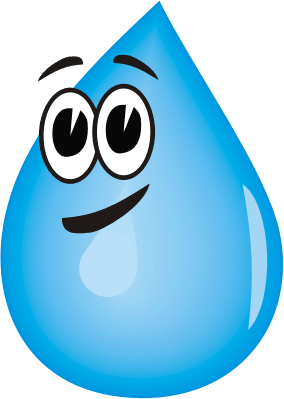 If the total blood volume falls too low, the heart cannot circulate blood effectively and the eventual result is hypovolemic shock. The vascular system responds by constricting blood vessels, thereby creating a smaller volume for the blood to fill. This mechanical solution has definite limits and usually must be supplemented with increased volume of fluid as soon as possible.
If the total blood volume falls too low, the heart cannot circulate blood effectively and the eventual result is hypovolemic shock. The vascular system responds by constricting blood vessels, thereby creating a smaller volume for the blood to fill. This mechanical solution has definite limits and usually must be supplemented with increased volume of fluid as soon as possible.
| I believe that water is the only drink for a wise person (man). —Henry David Thoreau |
A second type of dehydration occurs when this ratio is altered or even reversed. This occurs because the solute (solid matter dissolved in a fluid) concentration of the interstitial fluid surrounding the cells increases. This causes water to migrate from inside the cells out to the interstitial fluid surrounding the cells. This occurs through osmosis—a process by which the liquid molecules pass through the semipermeable cell membrane from a less concentrated solution into a more concentrated one. As water flows out of the cells, they shrink in volume. This type of dehydration is called “cellular dehydration.”
As brain cells shrink, this causes tissue to shrink and pull away from the skull. This type of dehydration is linked with an increased risk for developing a dementia,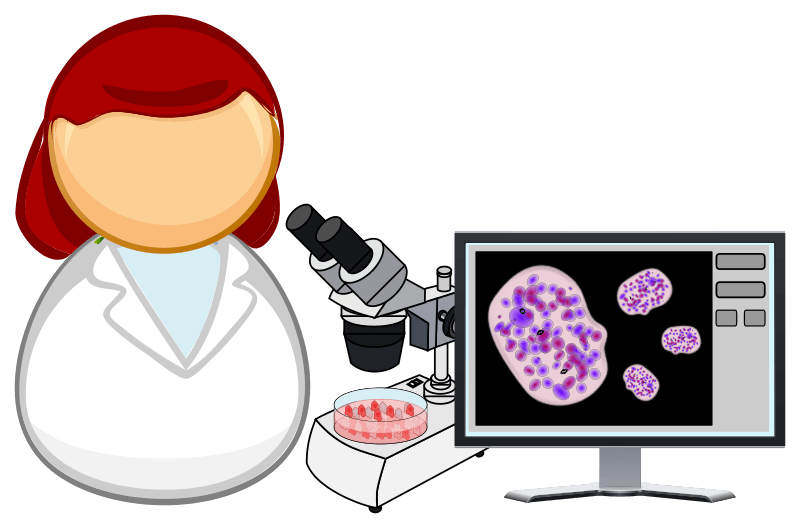 which is largely preventable. Cellular dehydration is also associated with lymph fluid problems, lowered blood volume, increased risk of clotting, headaches, irritability, inflammation, kidney failure, heat cramps, heatstroke, depression, and seizures due to electrolyte loss.
which is largely preventable. Cellular dehydration is also associated with lymph fluid problems, lowered blood volume, increased risk of clotting, headaches, irritability, inflammation, kidney failure, heat cramps, heatstroke, depression, and seizures due to electrolyte loss.
When life places stones in your path, be the water. A persistent drop of water will wear away even the hardest stone.
―Autumn Morning Star
4th –
Aging. Aging and water consumption appear to be directly related. Total Body Water (TBW) tends to decrease with age. The aging process can trigger cellular dehydration. As the volume of water inside the cells is reduced, the cells begin to wither. According to Dr. Mu Shik Jhon, outward signs of aging—wrinkling and withering, etc.—are indicators of what is happening inside the body.
| Thousands have lived without love, not one without water. —W. H. Auden |
Dehydration also increases the production of free radicals (molecules that have lost an electron). These free radicals can wrinkle the skin as well as internal body organs. Dehydrated skin is said to have a negative impact on aging. The lack of natural oil protection allows water to evaporate off your skin quickly. During the aging process, fibers that are responsible for keeping skin elastic—elastin—begin to wear down. This, plus a lack of appropriate hydration, can increase the formation of pronounced wrinkles. This sometimes begins to show in the skin around the eyes in wrinkles known as “crow’s feet.”
A team of scientists in Britain scanned the brains of teenagers who had just completed an hour and a half of cycling. Those who had exercised in sweat-inducing clothing had lost about two pounds of fluid in sweat—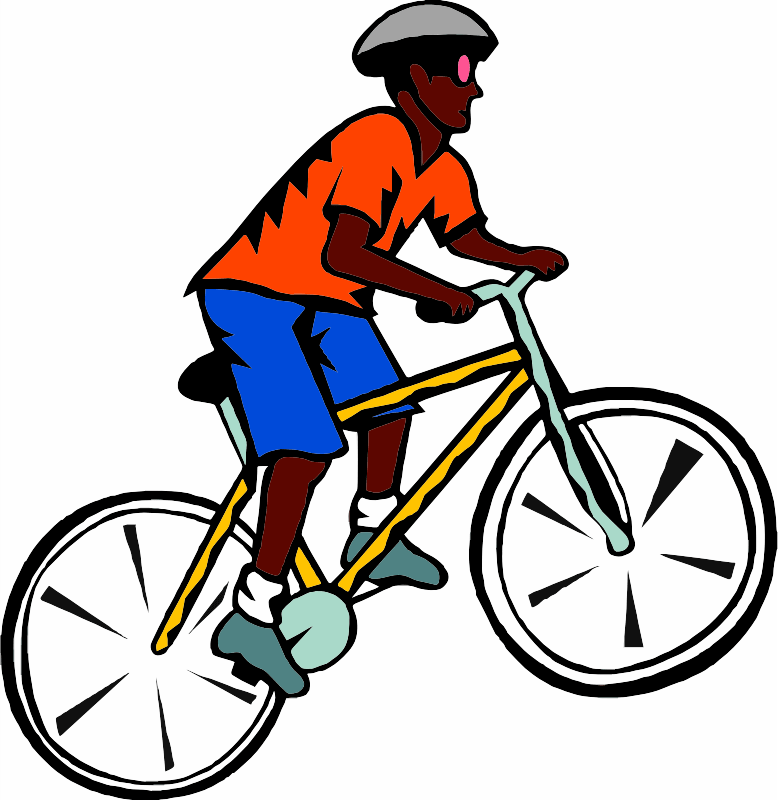 and their brain tissue had shrunk and pulled away from their skulls. Those who had lost the most weight from perspiration, showed the most brain shrinkage. In subsequent activities to test their ability to plan and solve problems, this group of participants did as well as those who had dressed more lightly to minimize sweating, but brain scans of the participants who wore the sweat-inducing clothing showed dehydrated brains that had to work harder. This is unhelpful as the brain ages!
and their brain tissue had shrunk and pulled away from their skulls. Those who had lost the most weight from perspiration, showed the most brain shrinkage. In subsequent activities to test their ability to plan and solve problems, this group of participants did as well as those who had dressed more lightly to minimize sweating, but brain scans of the participants who wore the sweat-inducing clothing showed dehydrated brains that had to work harder. This is unhelpful as the brain ages!
Man, despite his artistic pretensions, his sophistication, and his many accomplishments, owes his existence to a six-inch layer of topsoil and the fact that it rains.
—Paul Harvey
5th –
Thirst Sensations. In adults over the age of 50, the body's thirst sensation begins to fall and can continue to do so with aging. This puts the elderly population at increased risk of becoming dehydrated.  Thirst is an unreliable indicator of dehydration. By the time you are thirsty—if you have an operational thirst sensation—you are already dehydrated. Dehydration can lead to allergies due to increases in histamine. It thickens the blood to raise blood pressure and tries to prevent water loss in cells by producing more cholesterol. As waste products accumulate in the skin, dermatitis and premature wrinkling can occur, along with infection, inflammation, bladder and kidney pain, and digestive disorders including ulcer, acid reflux, and gastritis.
Thirst is an unreliable indicator of dehydration. By the time you are thirsty—if you have an operational thirst sensation—you are already dehydrated. Dehydration can lead to allergies due to increases in histamine. It thickens the blood to raise blood pressure and tries to prevent water loss in cells by producing more cholesterol. As waste products accumulate in the skin, dermatitis and premature wrinkling can occur, along with infection, inflammation, bladder and kidney pain, and digestive disorders including ulcer, acid reflux, and gastritis.
| Water is the world’s first and foremost medicine. —Old Proverb |
A one percent level of dehydration results in a five percent reduction in cognitive function, and you probably are not even feeling thirsty yet! A cognitive reduction may lead to difficulties making change while shopping, navigating around town, or deciding between two options. Just a two percent drop in your brain-body water supply can trigger a variety of symptoms including blurred vision, fuzzy short-term memory, difficulty with basic math problems, trouble focusing on smaller print such as seen on a computer, iPad, or mobile-phone screen. This shows that even mild dehydration can have notable effects, such as reducing concentration and lowering performance.
Many babies and children grow up being given food when they are fussy instead of first being offered water to determine if they are just thirsty—or physiologically hungry. Consequently, many never learn to differentiate between genuine physiological hunger and thirst. In adulthood, many individuals eat when they are thirsty—not hungry—because they confuse the two. This can lead to both dehydration and to weight gain.
Water is one of the most basic of all needs - we cannot live for more than a few days without it. And yet, most people take water for granted. We waste water needlessly and don't realize that clean water is a very limited resource. More than 1 billion people around the world have no access to safe, clean drinking water, and over 2.5 billion do not have adequate sanitation service. Over 2 million people die each year because of unsafe water—and most of them are children!
—Robert Alan Aurthur
 Reminder: Drink a glass of water. Listen to Chapter 7 of “Just the Facts.” If possible, walk around the room while you listen. At least walk in place.
Reminder: Drink a glass of water. Listen to Chapter 7 of “Just the Facts.” If possible, walk around the room while you listen. At least walk in place.
6th –
| Caloric beverages are generally less satiating (satisfying) than isocaloric foods (foods of a similar caloric value). —Thomas Deahl, DMD, PhD |
Many mistakenly think that if they are drinking some type of fluid, they are good to go—so they substitute colas and surgery drinks for water. Unfortunately, alternative beverages such as fruit drinks, sodas (regular and diet), energy drinks, sports drinks, and sugary drinks, appear largely to have replaced water in the lives of many Americans. Estimates are that half the population above the age of 2 consumes sugary drinks on any given day. Consumption of soft drinks now exceeds 600 twelve-ounce servings per person per year. As waist sizes grow, so do health risks for diabetes, heart disease, cancer, and dementia.
Depending on the amount of soft drinks guzzled, a person might add as much as a pound (0.45 kg) per week to their weight. One 20-ounce glass of cola can contain the equivalent of 16 teaspoons of sugar, which is nearly 3 times the maximum daily sugar intake recommended by the American Heart Association.  Sugar is a toxin to the brain. But that may be just the tip of the iceberg. Soft drinks containing caffeine and sugar mimic the effect of amphetamines, providing a temporary energy boost. The ‘high’ shoots up blood sugar levels but is followed by a rebound ‘low’ as blood sugar levels fall. Such dramatic fluctuations in blood-sugar levels can damage both the brain and immune system organs, contribute to health problems in the long term, and even accelerate the development of symptoms of aging.
Sugar is a toxin to the brain. But that may be just the tip of the iceberg. Soft drinks containing caffeine and sugar mimic the effect of amphetamines, providing a temporary energy boost. The ‘high’ shoots up blood sugar levels but is followed by a rebound ‘low’ as blood sugar levels fall. Such dramatic fluctuations in blood-sugar levels can damage both the brain and immune system organs, contribute to health problems in the long term, and even accelerate the development of symptoms of aging.
Diet drinks have their own dangers. They may be free of calories, but they are not free of health-related consequences. Confusing the brain with artificial sweeteners may also trigger weight gain. A 2010 experiment in rats, found that those who were fed saccharin-sweetened yogurt ate more rat chow, gained more weight, and had a higher percentage of body fat compared with those who ate the same amount of yogurt containing glucose, a natural sugar. A study that followed more than four hundred diet-soda drinkers for ten years showed that their waist sizes increased seventy percent more than non-consumers. Those who drank two or more diet sodas per day increased their waist sizes five times more than those who avoided diet drinks entirely. Using brain imaging techniques, San Diego researchers found that as the consumption of diet sodas increased, activation in a brain area known as the caudate head diminished. The caudate head is associated with food motivation and the brain reward system. Decreased activation of this brain region has been linked with an elevated risk of obesity.
If the ocean can calm itself, so can you. We are both salt water mixed with air.
—Nayyirah Waheed
7th –
Obesity link. According to the CDC National Center for Health Statistics, more than one-third (35.5%) of adults in America are obese. Medical costs for those with obesity are more than $1,400 higher than for those whose weight is within a normal range. A University of Michigan study involving nearly 10,000 participants found that adults who did not consume enough water were more likely to be obese than hydrated adults. Taking in too little water daily increased the odds for obesity by 50 percent. Findings reported by Dr. Tammy Chang, study leader suggest that “hydration may deserve more attention when thinking about addressing obesity on a population level. Staying hydrated is good for you no matter what, and our study suggests it may also be linked to maintaining a healthy weight.”
| Water is the driving force in nature. ―Leonardo da Vinci |
In one study, drinking water was linked with weight loss in overweight women independent of what they ate and their activity levels. Other researchers found that drinking water in combination with physical exercise helps increase fat oxidation, a process by which the body uses stored fats to produce energy. Drinking water, over other beverages that contained calories, also helped with weight management. The World Health Organization (WHO) is concerned about obesity in children, considering it to be one of the most serious public health challenges of the 21st C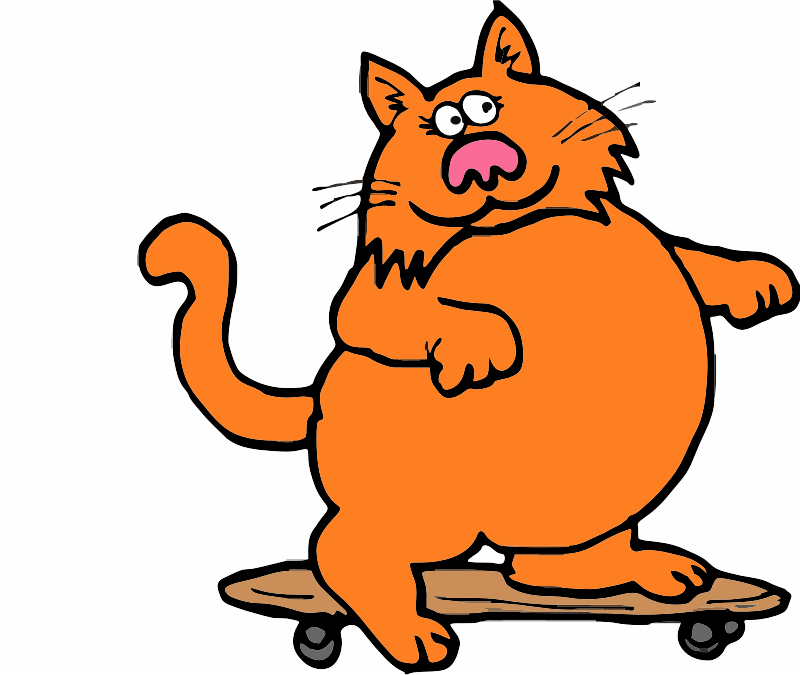 entury. Many overweight and obese children apparently drink little if any water in favor of sodas and surgery drinks. They tend to be likely to stay obese into adulthood, which increases their risk of developing noncommunicable diseases (NCDs) such as diabetes and cardiovascular problems at a younger rate. They believe that water should be the beverage of choice for daily hydration for children.
entury. Many overweight and obese children apparently drink little if any water in favor of sodas and surgery drinks. They tend to be likely to stay obese into adulthood, which increases their risk of developing noncommunicable diseases (NCDs) such as diabetes and cardiovascular problems at a younger rate. They believe that water should be the beverage of choice for daily hydration for children.
Water is such a lifesaver into which we cannot breathe, but without taking it into us we cannot live.
―Munia Khan
 Reminder: Drink a glass of water. Watch the short Birds & Brains video. Stand and walk in place for at least part of the video.
Reminder: Drink a glass of water. Watch the short Birds & Brains video. Stand and walk in place for at least part of the video.
Practical Applications
-
Sufficient water intake can help prevent body systems from giving up their need for water in favor of what the brain needs. This can include directing the body to steal some fluid from elsewhere in the body and send it up to the brain. At any given time, your bladder has the largest potential reservoir of fluid—urine. A specialist when describing this in a lecture commented humorously, “This process puts another spin on the term pee brain.” (The cliché is pea-brain, of course.)Drinking water is essential to a healthy lifestyle. Water is my drink.
—Stephen Curry - J. Pangman suggests drinking a glass of water 20-30 minutes before each meal. This can help the brain and body learn to distinguish between
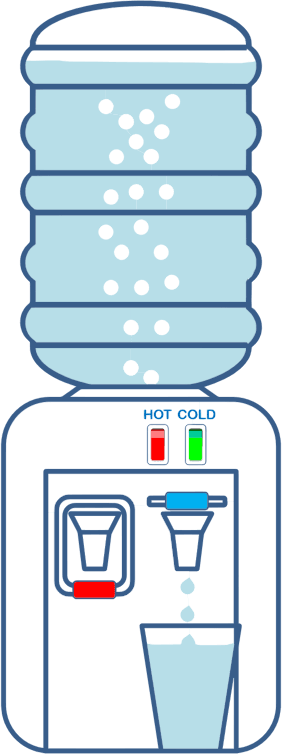 sensations of thirst versus hunger. The water can suppress hunger, body burn fat, increase fluidity of digestive juices, and prevent dehydration. More recently, some physicians suggest that you choose to drink a glass of water before going to bed. This can help keep dehydration at bay during sleep and possibly prevent blood clots in the brain.
sensations of thirst versus hunger. The water can suppress hunger, body burn fat, increase fluidity of digestive juices, and prevent dehydration. More recently, some physicians suggest that you choose to drink a glass of water before going to bed. This can help keep dehydration at bay during sleep and possibly prevent blood clots in the brain. - Waste products are excreted through pores in the skin. As waste products leave the body pores, they can remain on the skin. Therefore, cleanliness is important to wash away these waste products and prevent them from being reabsorbed into the body through the pores.
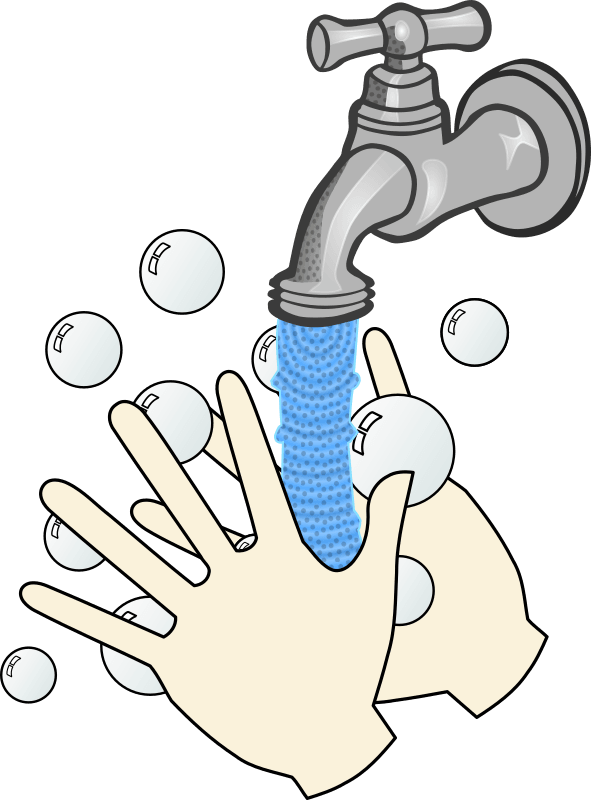 Regularly change clothing next to your skin for the same reason. Your clothing can absorb some of the excreted waste products, which then could be reabsorbed into the body through your pores. Aside from being unhealthy, it creates double work for your body.
Regularly change clothing next to your skin for the same reason. Your clothing can absorb some of the excreted waste products, which then could be reabsorbed into the body through your pores. Aside from being unhealthy, it creates double work for your body. - Water is important for the digestive process. It increases the fluidity of digestive juices and assists in handling the food you have eaten more efficiently. It helps to keep the food you eat moving through the small and large intestines. It even helps keep the intestines themselves smooth and flexible. There must be sufficient fluid to keep your stool soft and pliable, allowing the feces to pass smoothly through the large intestine into the outer world.
The large intestine collects water from the food waste. If you are drinking enough water, less water will be taken out of your large intestine or colon and proper consistency will likely be achieved: not too soft, not too hard. Dehydration is one of the most common causes of constipation. If you are dehydrated, your stool can become too hard and difficult to pass. If it becomes too hard to pass, an ‘impaction’ can result, which sometimes requires a hospital visit to remove. Constipation is not only uncomfortable all around, but some of the waste products may be reabsorbed along with the water. Staying well hydrated is one way to help prevent constipation.I believe that water is the only drink for a wise (man) person.
—Henry David Thoreau
The connection between depression and dehydration is well established. Re-hydrating your body by drinking enough water daily is foundational to any health treatment plan, including treatment for depression.
—Nancy Hearn, CNC

Reminder: Drink a glass of water as you dig into this last section. How are you choosing to apply this information practically in your everyday life?
Think & Do
- What is your daily regimen for drinking water?
According to the Mayo Clinic, food provides about 20 percent of one’s total fluid intake on average. That percentage may rise slightly in cold weather, if you are eating hot soup on a regular basis, for instance. Water is still your best bet for the other approximately 80 percent that is needed to keep your brain and body system well hydrated. Water is calorie-free, inexpensive, usually readily available, and requires no digestion.
- Have you learned to distinguish between hunger and thirst?
 Many are thirsty but think they are hungry, so they snack instead on chips or cookies or power bars or fast food. Sometimes they drink “food” that requires no chewing—like milk, fruit juices, sodas, or other sugary drinks. Consume your calories through quality food and make water your beverage of choice.
Many are thirsty but think they are hungry, so they snack instead on chips or cookies or power bars or fast food. Sometimes they drink “food” that requires no chewing—like milk, fruit juices, sodas, or other sugary drinks. Consume your calories through quality food and make water your beverage of choice.
- Do you have symptoms associated with dehydration?
Dr. Neil Nedley has pointed out that a lack of water causes dehydration of red blood cells, making them less flexible and with a greater tendency to form clots: a stroke when it occurs in the brain and a heart attack when it occurs in the heart. Thicker, more viscous blood increases the risk for stroke, heart disease, diabetes, kidney stones, and urinary tract infections. Not to mention all the winkling of skin on the outside of the body and some of the tissues that are inside. Remember the “shrinking” of brain tissue in the 4th Fact.
a stroke when it occurs in the brain and a heart attack when it occurs in the heart. Thicker, more viscous blood increases the risk for stroke, heart disease, diabetes, kidney stones, and urinary tract infections. Not to mention all the winkling of skin on the outside of the body and some of the tissues that are inside. Remember the “shrinking” of brain tissue in the 4th Fact.
- How much water do you drink daily?
The amount of water you need on any given day depends on a number of factors including your body size, the temperature in the immediate environment,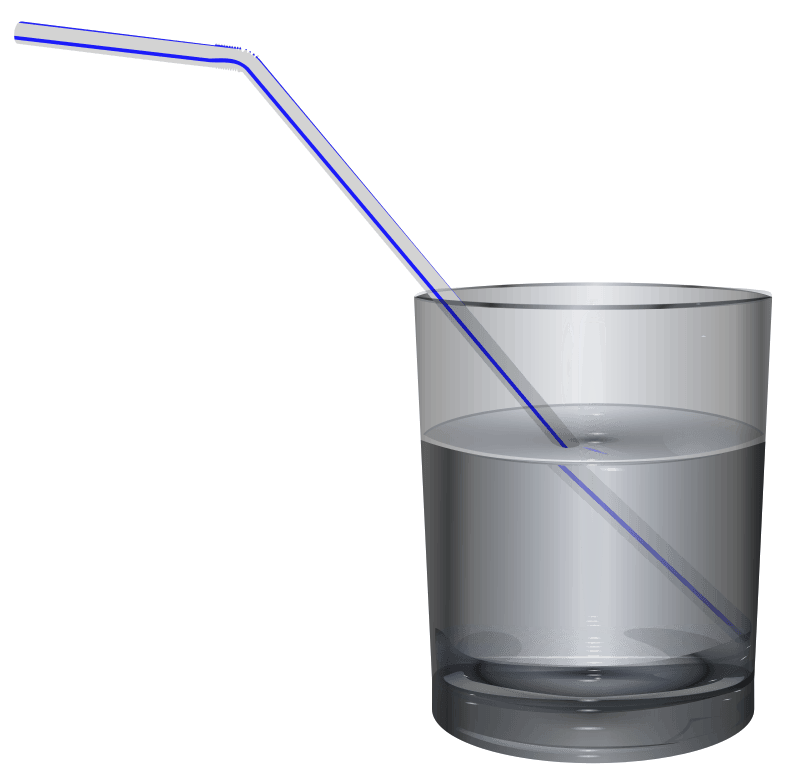 how much physical work or exercise, you are doing, what you are wearing, and your menu. According to Tammy Chang, MD, “One of the easiest ways to know whether you are getting enough water is to look at the color of your urine. Dark yellow means fluids in your brain and body are running low, while lightly tinted yellow urine indicates adequate water.” Remember the statistics from Mayo Clinic in the 1st Fact.
how much physical work or exercise, you are doing, what you are wearing, and your menu. According to Tammy Chang, MD, “One of the easiest ways to know whether you are getting enough water is to look at the color of your urine. Dark yellow means fluids in your brain and body are running low, while lightly tinted yellow urine indicates adequate water.” Remember the statistics from Mayo Clinic in the 1st Fact.
Water is your most essential nutrient. Make it a point to stay well hydrated. Your brain—especially—and your body will thank you. It can make all the difference in the world to your future.
When the well’s dry, we know the worth of water.
—Benjamin Franklin
Slow & Steady Wins
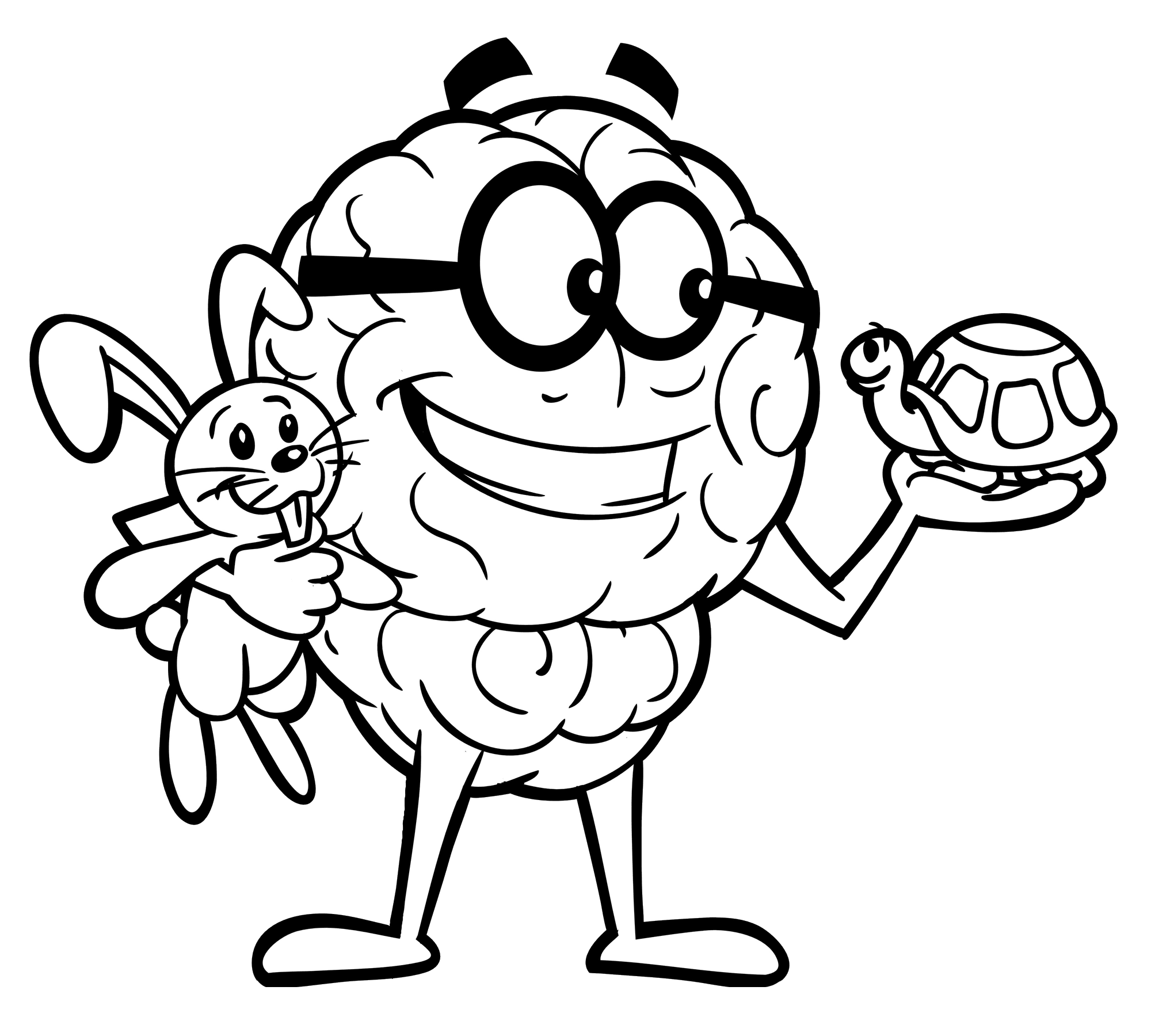 Concentrate on Module 5 during this entire week. Do your Daily Goals; reread the sections; relisten to the Videos and Audiobook excerpts. It takes the average adult four times through to really absorb the material and turn it into a new behavior. If you want positive results, rushing through the material (just because you can) may not provide the desired outcome.
Concentrate on Module 5 during this entire week. Do your Daily Goals; reread the sections; relisten to the Videos and Audiobook excerpts. It takes the average adult four times through to really absorb the material and turn it into a new behavior. If you want positive results, rushing through the material (just because you can) may not provide the desired outcome.
Practice, practice, and practice the strategies you are learning. Get plenty of sleep so your brain has time to ‘consolidate’— i.e., transfer—what you are learning from short term to long term memory. Drink plenty of water to keep your brain hydrated and able to generate the mental energy you need. Remember, your brain’s thinking cells (neurons) are estimated to be about 85 percent water. Dehydration can be lethal in brain central.
i.e., transfer—what you are learning from short term to long term memory. Drink plenty of water to keep your brain hydrated and able to generate the mental energy you need. Remember, your brain’s thinking cells (neurons) are estimated to be about 85 percent water. Dehydration can be lethal in brain central.
“But I don’t like water,” you moan. You can retrain your taste buds in ten days. Add a slice of lemon or lime or cucumber to your water and tell your brain: “(your name _______), you like the taste of water.” You may want to investigate alkaline water and hydrogen water as emerging research is touting benefits over tap water.
Use the brain-function information you are learning to help you keep your brain and body well hydrated!
Rain is the sky descending to the earth; without rain, there would be no life.
—John Updike
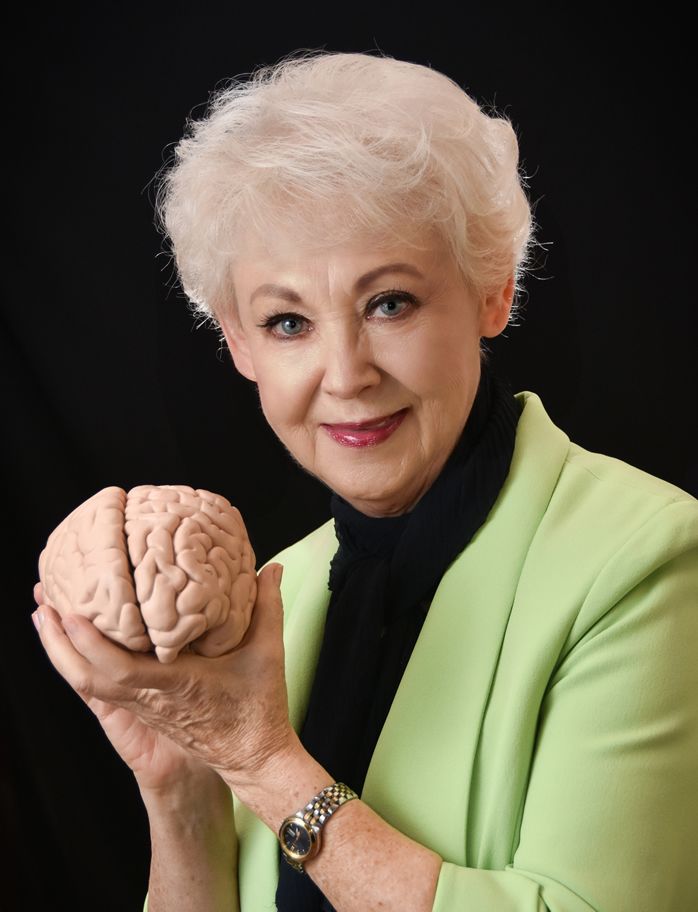 See you next week for LLM Online Module 6
See you next week for LLM Online Module 6
Topic:
Safety—Prevention beats cure
Lesson List
- Module 2 – Emotional Intelligence (EQ)
- Module 2 – To Begin
- Module 2 – Slow & Steady Wins
- Module 1 – Mindset and Self-talk
- Module 1 – To Begin
- Module 1 – Slow & Steady Wins
- Module 1 – Mindset (educational video)
- Module 1 – Birds & Brains (video)
- Module 1 – Just the Facts - Chapter 1 (audio)
- Module 1 – Just the Facts - Chapter 2 (audio)
- Module 2 – EQ (Emotional Intelligence) (video)
- Module 2 – Just the Facts - Chapter 3 (audio)
- Module 4 – Sleep
- Module 4 – To Begin
- Module 4 – Slow & Steady Wins
- Module 3 – Mental & Physical Exercise
- Module 3 – To Begin
- Module 3 – Slow & Steady Wins
- Module 5 – Water
- Module 5 – To Begin
- Module 5 – Slow & Steady Wins
- Module 6 – Safety
- Module 6 – To Begin
- Module 6 – Slow & Steady Wins
- Module 7 – Sunlight
- Module 7 – To Begin
- Module 7 – Slow & Steady Wins
- Module 8 – Nutrition
- Module 8 – To Begin
- Module 8 – Slow & Steady Wins
- Module 10 – Support Network
- Module 10 – To Begin
- Module 11 – Stressors
- Module 10 – Slow & Steady Wins
- Module 9 – Laughter
- Module 9 – To Begin
- Module 11 – To Begin
- Module 9 – Slow & Steady Wins
- Module 11 – Slow & Steady Wins
- Module 12 – Life Satisfaction
- Module 12 – To Begin
- Module 12 – Slow & Steady Wins
- Module 2 — Birds & Brains, No. 2 - EQ (video)
- Module 3 – Exercise (educational video)
- Module 3 – Just the Facts - Chapter 4 (audio)
- Module 3 – Just the Facts - Chapter 5 (audio)
- Module 3 – Birds & Brains, No. 3 - Exercise (video)
- Module 4—Just the Facts - Ch. 6 (audio)
- Module 4—Birds & Brains #4 (video)
- Module 4—Sleep (educational video)
- Module 5—Water (educational video)
- Module 5 – Just the Facts - Chapter 7 (audio)
- Module 5 — Birds & Brains #5 (video)
- Module 6 – Safety (educational video)
- Module 6 – Just the Facts - Chapter 8 (audio)
- Module 7 – Birds & Brains #7 (video)
- Module 8 – Just the Facts - Chapter 10 (audio)
- Module 8 – Nutrition (educational video)
- Module 8 – Birds & Brains #8 (video)
- Module 7 – Just the Facts - Chapter 9 (audio)
- Module 6 — Birds & Brains #6 (video)
- Module 7 – Sunlight (educational video)
- Module 9 – Laughter (educational video)
- Module 9 – Just the Facts - Chapter 11 (audio)
- Module 9 – Birds & Brains #9 (video)
- Module 10 – Support Systems (educational video)
- Module 10 – Just the Facts - Chapter 12 (audio)
- Module 10 – Birds & Brains, No. 10 - Support Systems (video)
- Module 11 – Stressors (educational video)
- Module 11 – Just the Facts - Chapter 13 (audio)
- Module 11 – Birds & Brains No. 11 - Stressors (video)
- More Information
- Module 12 – Life Satisfaction (educational video)
- Module 12 – Birds & Brains, No. 12 - Life Satisfaction (video)
- Module 12 – Just the Facts - Chapter 14 (audio)
Teachers Info

Arlene R. Taylor, PhD
- Specialist:
- Website: https://www.arlenetaylor.org/
-
Arlene R. Taylor PhD, a leading speaker on brain function, is sometimes referred to as the brain guru. She specializes in simplifying this complex topic, with the goal of helping individuals understand more about the brain in general and their own in particular. She delights in helping others learn how to thrive by...

